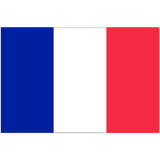
TASTE OF THE TOUR: Sheep stomachs and Roquefort in Millau
MENDE, France (AP) The Tour de France travels through a region where the gastronomy is heavily influenced by sheep on Sunday, with stuffed sheeps' stomachs and Roquefort cheese just two of the local specialties.
Cheese is so popular in the area that cheese soup is a specialty of Millau, where the stage begins before taking the riders on a challenging route through the natural regional park of Haut Languedoc.
Millau, which has the highest viaduct in the world, has a long association with cycling, but this time the Tour riders will go under the huge structure. They will have other concerns on the final stage before the second rest day, including the daunting Pic de Nore climb, which looms around 40 kilometers before the finish.
Here's a gastronomic, sporting and cultural glance at the route for Stage 15:
BAGUETTE AND BUTTER: The stage from Millau follows a 181.5-kilometer (113-mile) route south through the Occitanie region to the fortified city of Carcassonne. Despite a first-category climb to Pic de Nore, Sky teammates Geraint Thomas and Chris Froome are expected to hold on to the top two spots in the standings.
PLAT DU JOUR: Millau is known for its ''trenels'' - sheeps' stomachs cut into strips and stuffed with pork, ham and garlic before being sown back up and poached in a stew of white wine, carrots, onions, leek and herbs.
CULTURE: The old historical region of Occitania was much bigger than the present-day administrative region of Occitanie and stretched across the southern third of France. Its language, Occitan, has survived and is still spoken, mostly as a second language in parts of its former territory encompassing parts of France, Italy and Spain. Occitan's closest relation is Catalan and the language enjoys official status in Catalonia due to a prevalence of speakers in the Spanish region's Aran Valley.
VIN DU JOUR: Chateau du Donjon, a Minervois rose, is just one of a wide variety of wines produced in Occitanie, made from a blend of grenache, syrah and cinsault grapes, featuring a fruity and light finish.
HISTORY: After 70.5 kilometers, the peloton will pass the La Font dels Pissaires, a fountain dedicated to celebrate the diuretic virtues of the local waters. It was completed in 1559 and has become one of the spa town's best-known landmarks.
STAT OF THE DAY: 3 - By winning Stage 14, Omar Fraile became the third Spanish winner of a Tour stage in Mende after Marcos Serrano in 2005 and Joaquim ''Purito'' Rodriguez in 2010.
QUOTE OF THE DAY: ''It would be a dream scenario for us if that is the case.'' - Chris Froome, when asked if he foresaw Thomas and he remaining 1-2 when the Tour concludes in Paris next Sunday.
FROMAGE: Roquefort is the Occitanie region's famous sheep's milk cheese. Crumbly and tangy with blue mold streaks, it has a distinctive and slightly salty taste. Though similar cheeses are produced elsewhere, only those aged in the Cambalou caves of Roquefort-sur-Soulzon can legally be called Roquefort.
NEXT ORDER: After the Tour's second rest day on Monday, riders will brace for the challenge of the Pyrenees. Stage 16 on Tuesday follows a 218-kilometer route from Carcassonne to Bagneres-de-Luchon.
---
Associated Press writers Joseph Wilson and Andrew Dampf contributed.
---
More Tour de France coverage: https://apnews.com/tag/TourdeFrance

